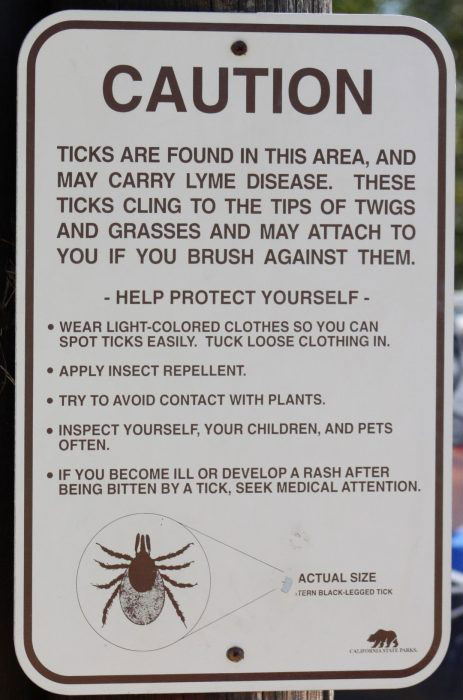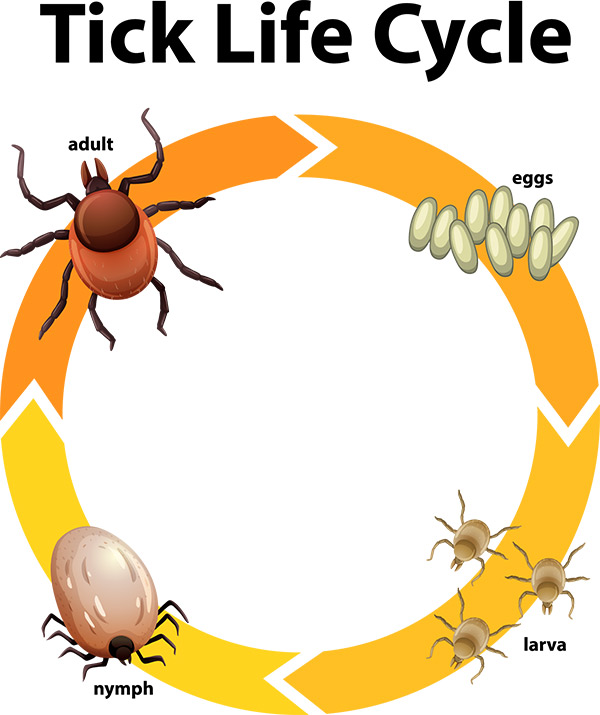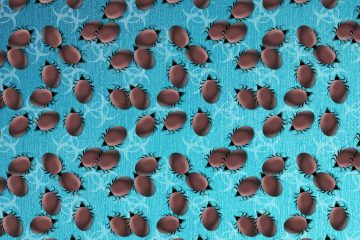H eading to the beach? Don’t forget the sunscreen and tick repellent! New research reveals those nasty little pests have been hiding out in yet another favorite location—sunny California seashores.

Daniel Salkeld, PhD, from Colorado State University said, “The high rate of disease-carrying ticks in the coastal chaparral was really surprising to us.” Partly because the gray squirrel, which has been known as the primary tick host in northwestern California, doesn’t live in coastal areas.
When most of us think about ideal tick habitat we picture tall grass, leaf litter, or wooded areas. Most would never think to protect themselves from ticks when heading to the beach.
In fact, Lyme and Old Lyme Connecticut, the area where Lyme disease was first discovered, is a coastal community with miles of shoreline, tidal marsh, and inland wetlands—all prime areas for Ixodes scapularis, aka deer tick (Steere 1977).
Dr. Kirby C. Stafford III, Chief Scientist/State Entomologist at the Connecticut Agricultural Experiment Station (CAES) explained, “Blacklegged ticks here are found in shore areas, but would not be on the hot sands of the beach itself. However, the grasses and low shrub present near dunes, or even high shrub walking to the sands proper, would be a risk.”
While the presence of coastal ticks may be common knowledge on the East Coast, I can tell you as a native Californian, it’s not something I had ever considered. Until now.
Latest Research in Northern California
 Over a four-year period, Salkeld and his researchers collected thousands of ticks in public and private areas in seven counties around the San Francisco Bay Area: Marin, Mendocino, Monterey, Napa, Santa Clara, Santa Cruz, and Sonoma. Ticks were collected from woodlands and grasslands, as well as coastal chaparral—a habitat not previously studied in California (Salkeld 2021).
Over a four-year period, Salkeld and his researchers collected thousands of ticks in public and private areas in seven counties around the San Francisco Bay Area: Marin, Mendocino, Monterey, Napa, Santa Clara, Santa Cruz, and Sonoma. Ticks were collected from woodlands and grasslands, as well as coastal chaparral—a habitat not previously studied in California (Salkeld 2021).
(Chaparral is a geographic landscape found primarily in the Western US from Southern Oregon to Northern Baja, Mexico. The foliage of the chaparral is shaped by mild, wet winters, and hot, dry summers. It consists mainly of coastal sage, and low- lying “scrub”—drought-tolerant plants, bushes, poison oak, grasses, herbs, berries, and trees.)
Blacklegged ticks (Ixodes scapularis, Ixodes pacificus) transmit Borrelia burgdorferi, the bacterium that causes Lyme disease. They have four lifecycle stages—egg, larva, nymph, and adult. Nymphs and adults can bite and transmit Lyme bacteria to humans…….Join or login below to continue reading.




























